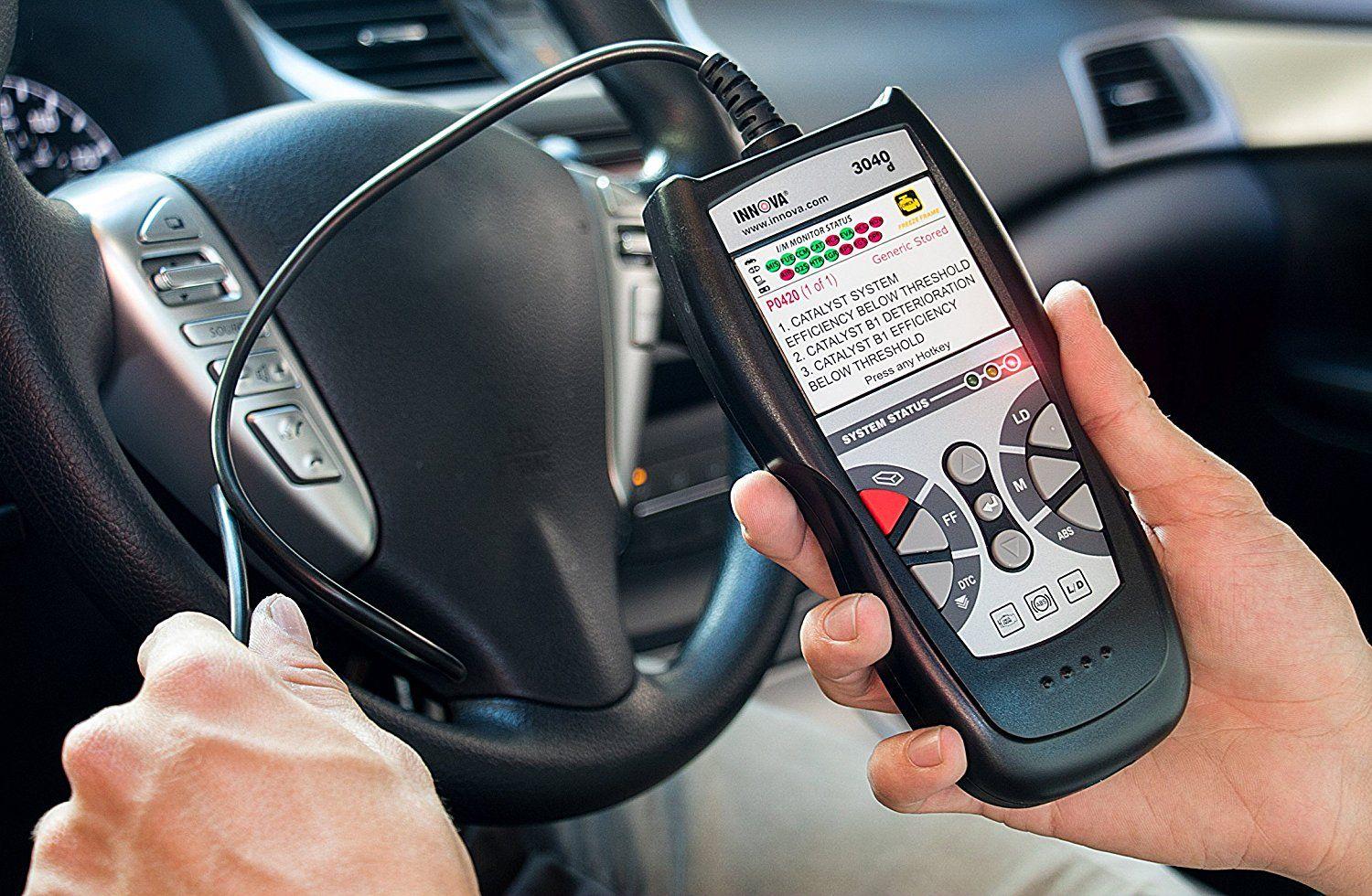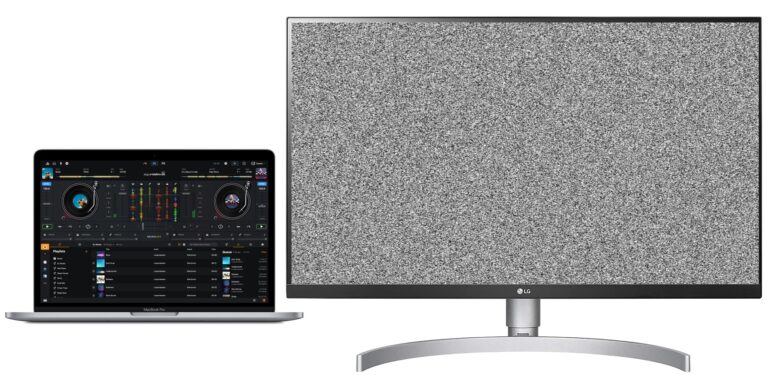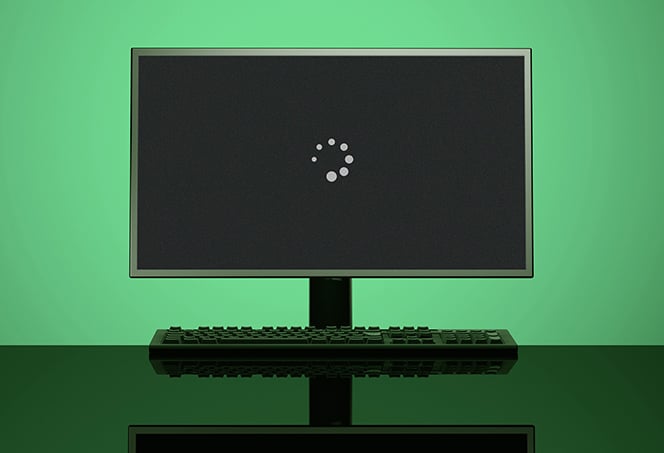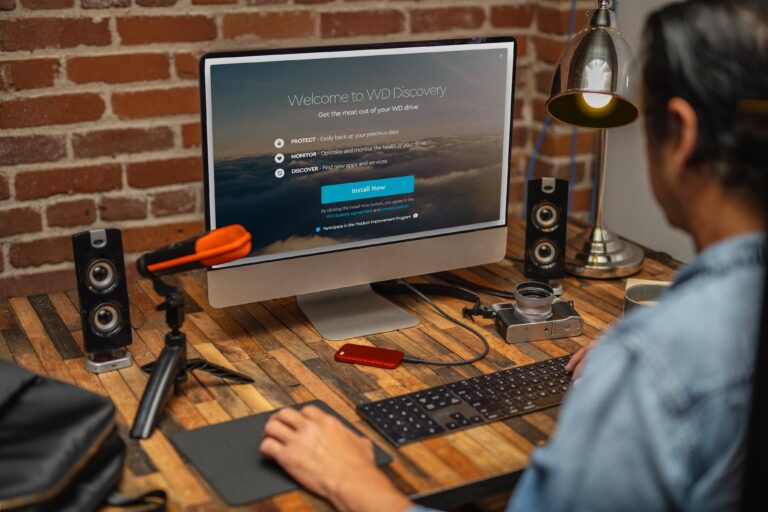Not Ready for Emissions Test? Toyota Catalyst Monitor Has the Solution!
The Toyota Catalyst Monitor may not be ready due to incomplete driving cycles or a malfunctioning catalytic converter. This can be resolved by completing a sufficient number of driving cycles or addressing the catalytic converter issue.
The Toyota Catalyst Monitor is an integral part of the vehicle’s emission control system, which monitors the efficiency of the catalytic converter in reducing harmful emissions. If the catalyst monitor is not ready, it means the system has not completed the necessary self-checks to ensure proper operation.
This can prevent the vehicle from passing emissions tests or cause the check engine light to illuminate. Understanding the reasons behind this issue and taking appropriate action can help ensure the vehicle’s compliance with emission standards and maintain its overall performance.
Toyota Catalyst Monitor Explained
The Toyota catalyst monitor is an essential component of a vehicle’s emission control system. It is designed to monitor the efficiency of the catalytic converter, ensuring that it is functioning optimally and reducing harmful emissions.
Importance For Emission Testing
The catalyst monitor plays a crucial role in emission testing, as it helps determine whether a vehicle meets the required standards for air pollution control. During an emission test, the monitor checks the catalytic converter’s ability to convert harmful gases into less harmful substances. If the catalyst monitor is not ready, it means that the vehicle has not completed the necessary self-tests to ensure its compliance with emission standards.
How It Impacts Vehicle Performance
The catalyst monitor’s readiness status can affect the vehicle’s overall performance. When the monitor is not ready, it indicates that the vehicle’s computer system has not detected a sufficient number of specific driving conditions to complete the necessary tests. As a result, the vehicle may not be operating at peak performance, potentially leading to reduced fuel efficiency and overall engine performance. It is important to address any catalyst monitor issues to ensure optimal vehicle performance and fuel economy.
The Workings Of Toyota’s Catalyst Monitoring System
To understand how Toyota’s catalyst monitoring system works, it is important to know that it relies on various sensors, including oxygen sensors and the engine control module (ECM). The ECM continuously monitors the performance of the catalytic converter by analyzing data from the oxygen sensors.
- The oxygen sensors help detect the level of oxygen in the exhaust gases before and after they pass through the catalytic converter. This data allows the ECM to determine the converter’s efficiency.
- If the ECM detects a deviation from the expected values, it may trigger a catalyst monitor readiness status. This indicates that the vehicle needs to go through a series of driving conditions before the monitor can confirm the catalytic converter’s performance.
- During these driving conditions, the ECM tracks various factors such as vehicle speed, engine load, and temperature. Once the required conditions are met, the catalyst monitor status changes to “ready,” indicating that the catalytic converter is functioning optimally.
It is important to note that achieving a “ready” status can vary depending on the specific driving conditions required by different vehicles. Thus, it is advisable to consult the vehicle’s owner’s manual or a trusted automotive professional to understand the specific requirements for the catalyst monitor to be ready.
Is Your Toyota Ready For Emission Checks?
Is your Toyota due for emission checks? Ensure your vehicle’s catalyst monitor is ready with our expert tips and guidance. Take action now to avoid any issues with your Toyota’s emissions and keep your vehicle running smoothly.
If you own a Toyota vehicle, ensuring it is ready for emission checks is crucial for your vehicle’s overall emission performance and compliance with environmental regulations. One of the key aspects to pay attention to is the Toyota Catalyst Monitor. A non-ready status of the Catalyst Monitor can have significant consequences when it comes to passing emission tests and maintaining a clean and environmentally friendly vehicle. In this article, we will discuss how to identify signs of a non-ready status, the consequences of failing emission tests, and steps you can take to ensure your Toyota is ready for emission checks.
Identifying Signs Of A Non-ready Status
If you are unaware of what a non-ready status for the Toyota Catalyst Monitor means, it is essentially an indication that specific emissions-related diagnostic tests have not completed since the vehicle’s last memory clear or the battery has been disconnected. The on-board diagnostic (OBD) system in your Toyota constantly monitors the performance of various emission control components, and the Catalyst Monitor is responsible for evaluating the efficiency of the catalytic converter.
When the Catalyst Monitor is not ready, it typically manifests with a specific OBD code, such as P1000 or P1001, depending on the Toyota model. Additionally, the “Check Engine” light may be illuminated, providing further indication of a non-ready status. In order to verify the readiness status of the Catalyst Monitor, you can use an OBD-II scan tool or consult a qualified technician.
Consequences Of Failing Emission Tests
Failing an emission test due to a non-ready status of the Toyota Catalyst Monitor can lead to a variety of consequences. Firstly, depending on your jurisdiction, failing an emission test may result in a hefty fine or the inability to renew your vehicle registration. Additionally, a vehicle with a non-ready Catalyst Monitor may be emitting higher levels of harmful pollutants, contributing to air pollution and potentially causing damage to the environment.
Moreover, failing an emission test can indicate underlying issues with your vehicle’s emission control system, which can affect its overall performance and fuel efficiency. Addressing these issues promptly not only ensures compliance with regulations but also helps maintain the longevity and optimal functioning of your Toyota.
Ensuring Readiness For Emission Checks
To prepare your Toyota for emission checks and ensure the readiness status of the Catalyst Monitor, there are several steps you can take. Firstly, it is important to drive the vehicle under specific conditions known as the “drive cycle.” This involves a mix of highway and city driving, allowing the OBD system to complete its diagnostic tests and update the Catalyst Monitor’s status.
If the Catalyst Monitor does not become ready after regular driving, it may be necessary to perform a specific drive cycle procedure recommended by Toyota or consult a qualified technician for further assistance. Additionally, ensuring your vehicle’s battery is in good condition and properly connected can help avoid a non-ready Catalyst Monitor status.
| Steps to Ensure Readiness for Emission Checks |
|---|
| 1. Drive the vehicle under specific drive cycle conditions. |
| 2. Check the battery to ensure it is in good condition and properly connected. |
| 3. If the Catalyst Monitor remains non-ready, consult a qualified technician for further guidance. |
By following these steps and addressing any potential issues, you can ensure your Toyota is prepared for emission checks and maintain a clean, efficient, and environmentally friendly vehicle.
Innovative Solutions For Emissions Preparedness
In today’s environmentally conscious world, the automotive industry is constantly seeking innovative solutions to combat emissions and contribute to a greener future. Toyota, a leading pioneer in the automotive industry, has taken the initiative to address emission challenges through their advanced diagnostic tools and solutions. With their commitment to sustainability and eco-friendly driving, Toyota has developed a comprehensive approach to ensure emissions readiness and minimize environmental impact. In this article, we will delve into Toyota’s approach to emission challenges and explore the diagnostic tools they provide to optimize emissions control.
Toyoata’s Approach To Emission Challenges
Toyota understands the importance of emission compliance and the need for robust systems to monitor and control vehicle emissions. As a result, they have implemented a proactive approach to emission challenges by developing innovative technologies and strategies. Their objective is to continuously improve fuel efficiency and reduce harmful emissions.
Diagnostic Tools Provided By Toyota
Toyota offers a range of diagnostic tools that ensure optimal emissions control and help with readiness monitoring. These tools are designed to efficiently identify any potential issues related to vehicle emissions and provide accurate data for effective troubleshooting. By utilizing these diagnostic tools, Toyota empowers technicians, enabling them to diagnose emission problems promptly and carry out necessary repairs and adjustments.
One such diagnostic tool provided by Toyota is the Toyota Techstream system. This advanced software enables technicians to access and analyze data from the vehicle’s onboard computer system. With its comprehensive diagnostic capabilities, Techstream assists in pinpointing any potential emission-related malfunctions or discrepancies that may cause the catalyst monitor to be not ready. This means that technicians can quickly identify and address the underlying issues to ensure that the vehicle is in compliance with emission standards. Additionally, Techstream allows for real-time monitoring of various emission parameters, aiding in the evaluation of the overall emission control system.
Furthermore, Toyota offers the Toyota Diagnostic Tester (TDT), which is a powerful and user-friendly tool that aids in emissions-related diagnostics. This handheld device connects to the vehicle and allows technicians to perform various tests, including monitoring the status of the catalyst monitor. With its intuitive interface and precise functionality, the TDT helps technicians in identifying emission-related issues and taking appropriate actions to rectify them.
In conclusion, Toyota’s commitment to emissions readiness and their innovative diagnostic tools demonstrate their dedication to reducing environmental impact and ensuring compliance with emission regulations. By continuously improving their systems and providing technicians with the tools they need, Toyota strives to deliver vehicles that not only offer performance and reliability but also contribute to a greener and more sustainable future.
Toyota Catalyst Monitor’s Role
The Toyota Catalyst Monitor plays a crucial role in ensuring efficient vehicle emissions control. As part of the On-Board Diagnostic (OBD) system, this monitor is responsible for detecting any issues with the catalytic converter, a key component in reducing harmful exhaust emissions. By monitoring the converter’s performance, the catalyst monitor helps to maintain optimal emission levels, contributing to a cleaner and greener environment.
How The Monitor Enhances Emission Test Readiness
The Toyota Catalyst Monitor plays a vital role in enhancing the readiness of a vehicle for emission tests. It continuously checks the efficiency of the catalytic converter, which is essential for meeting stringent emission standards. Here’s how it accomplishes this:
- Continuous monitoring: The catalyst monitor constantly evaluates the performance of the catalytic converter during normal vehicle operation. It examines various parameters such as oxygen sensor readings, engine load, and operating conditions to ensure that the converter is functioning optimally.
- Fault detection and notification: If the monitor detects any abnormalities or potential issues with the catalytic converter, it triggers a Diagnostic Trouble Code (DTC) that illuminates the Check Engine Light on the dashboard. This serves as an early warning for the driver to address the problem promptly.
- Readiness status: It is important for the catalyst monitor to be in a “ready” state before an emissions test. If the vehicle has recently undergone repairs or the battery has been disconnected, the monitor may show a “not ready” status. However, once the OBD system completes a series of self-tests over multiple drive cycles, the catalyst monitor will transition to a “ready” state.
Steps Toyota Owners Can Take To Leverage The System
To ensure the Toyota Catalyst Monitor is ready for an emissions test, Toyota owners can take the following steps:
- Regular maintenance: Schedule periodic maintenance and adhere to the manufacturer’s recommended service intervals. This will help keep your vehicle’s emission control system in good condition.
- Resolve any detected issues: If the Check Engine Light illuminates, promptly diagnose and resolve the issue indicated by the Diagnostic Trouble Code. Ignoring the problem could result in further damage to the catalytic converter and potentially lead to higher emissions.
- Drive cycles: After resolving any issues, it is important to complete a number of drive cycles to ensure the catalyst monitor transitions to a “ready” state. A drive cycle typically consists of a mix of city and highway driving under various conditions. Consult your vehicle’s owner’s manual or contact your Toyota dealer for specific instructions regarding drive cycles.
- Resetting the system: In some cases, if the readiness status does not transition to “ready” even after completing multiple drive cycles, a mechanic or dealership technician may need to reset the OBD system using specialized diagnostic tools.
By understanding the role of the Toyota Catalyst Monitor and taking appropriate measures to maintain its readiness, Toyota owners can ensure that their vehicles comply with emission regulations and contribute to a cleaner environment.
Monitoring And Maintenance Strategies
The Toyota catalyst monitor plays a crucial role in ensuring that your vehicle’s emissions are within the acceptable limits. When the catalyst monitor is not ready, it indicates that the system has not completed its self-check process. To optimize the performance of your Toyota’s catalyst monitor and ensure proper emission readiness, implementing regular checks and maintenance strategies is essential.
Regular Checks For Toyota Catalyst Efficiency
Monitoring your Toyota’s catalyst efficiency on a regular basis is an effective way to ensure optimal performance. By conducting these checks, you can identify any potential issues early on, preventing them from escalating into more significant problems. Here are a few recommendations for monitoring the efficiency of your Toyota’s catalyst:
- Use an OBD-II scanner: Utilize a high-quality OBD-II scanner to check for any diagnostic trouble codes (DTCs) related to the catalyst system. This will help you identify any malfunctions or error codes.
- Inspect the check engine light: Pay attention to the status of the check engine light on your dashboard. If it remains illuminated or starts flashing, it may indicate catalyst system issues.
- Monitor exhaust system performance: Keep an eye on any unusual exhaust system behaviors, such as excessive smoke, abnormal odor, or changes in sound. These could be indicators of catalyst problems.
Maintenance Tips To Ensure Emission Readiness
Preventive maintenance is key to keeping your Toyota’s catalyst monitor ready at all times. Regular upkeep and proper care can significantly contribute to emission readiness and the overall performance of your vehicle. Here are some maintenance tips to follow:
- Follow the manufacturer’s recommendations: Adhere to Toyota’s recommended maintenance schedule for your specific model. This includes regular oil changes, air filter replacements, and spark plug inspections.
- Use high-quality fuels and additives: Opt for reputable fuel sources and consider using fuel additives that can help keep your catalyst clean and improve fuel efficiency.
- Keep the exhaust system clean: Regularly inspect the exhaust system for any signs of damage, leaks, or corrosion. Promptly address any issues to prevent catalyst contamination.
- Drive regularly and avoid short trips: Regular driving allows the catalyst to heat up and burn off any accumulated deposits. Avoiding short trips can help maintain catalyst efficiency.
By implementing these monitoring and maintenance strategies, you can ensure that your Toyota’s catalyst monitor is ready for action when it comes to keeping emissions in check. Stay proactive, address any issues promptly, and enjoy a cleaner and more efficient driving experience.
Simplifying Pre-test Catalyst Checks
When it comes to vehicle emissions testing, one of the essential components that is closely monitored is the catalytic converter. The catalytic converter plays a crucial role in reducing harmful emissions from your vehicle’s exhaust system. However, before taking your Toyota for an emissions test, it is important to ensure that the catalyst monitor is ready.
Utilizing Onboard Diagnostics (obd)
To simplify pre-test catalyst checks, Toyota vehicles come equipped with onboard diagnostics (OBD) systems that can provide valuable information about the status of your vehicle’s components, including the catalyst monitor. By utilizing the OBD system, you can easily check if the catalyst monitor is ready for an emissions test.
Here’s how you can check the catalyst monitor status using OBD:
- Start by turning on your Toyota vehicle and ensuring that the engine is running.
- Locate the OBD port in your vehicle. In most Toyota models, the OBD port is usually located under the dashboard on the driver’s side.
- Connect an OBD scanner or code reader to the OBD port.
- Follow the instructions provided by the OBD scanner to access the diagnostic menu.
- Look for the “Readiness Monitors” or “Monitor Status” option in the diagnostic menu.
- Once you have selected the “Readiness Monitors” or “Monitor Status” option, check the status of the catalyst monitor. If it shows “Ready” or “Complete,” it means that the catalyst monitor is ready for an emissions test.
Resources For Toyota Drivers To Self-assess Their Vehicles
To help Toyota drivers with pre-test catalyst checks and other diagnostic needs, several resources are available:
| Resource | Description |
|---|---|
| Toyota Owner’s Manual | The owner’s manual provided with your Toyota vehicle contains valuable information about the OBD system and how to perform pre-test catalyst checks. |
| Toyota Techstream | Techstream is a diagnostic software used by Toyota dealerships and service centers. It allows for in-depth vehicle diagnostics, including monitoring the status of various components. |
| Online Forums and Communities | There are various online forums and communities where Toyota owners share knowledge and experiences. These platforms can provide helpful tips and guidance on performing pre-test catalyst checks. |
| Toyota Service Centers | If you are unsure about performing pre-test catalyst checks on your own, you can always reach out to your nearest Toyota service center. They have the expertise and tools to assist you with any diagnostic needs. |
By utilizing these resources and taking advantage of the OBD system in your Toyota vehicle, you can simplify pre-test catalyst checks and ensure that your vehicle is ready for emissions testing. Regularly checking the catalyst monitor status can help you identify any issues with your vehicle’s catalytic converter and address them promptly to maintain optimal performance and reduce harmful emissions.

Credit: www.youtube.com
Frequently Asked Questions For Toyota Catalyst Monitor Not Ready
What Does It Mean When The Toyota Catalyst Monitor Is Not Ready?
When the Toyota catalyst monitor is not ready, it means that the vehicle’s onboard diagnostics system has not completed its self-check of the catalytic converter. This can happen after the battery has been disconnected or if the vehicle has not been driven enough to complete the necessary drive cycles for the monitor to run.
It is important to resolve this issue to ensure that the vehicle meets emissions standards.
How Can I Get The Toyota Catalyst Monitor To Be Ready?
To get the Toyota catalyst monitor ready, you need to drive the vehicle under specific conditions known as “drive cycles”. These conditions involve a combination of driving at different speeds, accelerating and decelerating, and maintaining a steady speed. By following the manufacturer’s guidelines for the specific drive cycle, you can ensure that the catalyst monitor completes its self-check and becomes ready.
How Long Does It Take For The Toyota Catalyst Monitor To Become Ready?
The time it takes for the Toyota catalyst monitor to become ready varies depending on several factors, such as the vehicle model, engine type, and driving conditions. In some cases, it can take several days of normal driving for the monitor to complete its self-check and become ready.
However, following the manufacturer’s guidelines for the specific drive cycle can help expedite the process.
Can I Pass An Emissions Test If The Toyota Catalyst Monitor Is Not Ready?
No, you cannot pass an emissions test if the Toyota catalyst monitor is not ready. The monitor is an important component in ensuring that the vehicle meets emissions standards. If the monitor is not ready, it indicates that the vehicle’s emissions control system has not completed its self-check and may not be functioning properly.
It is necessary to resolve this issue before attempting an emissions test.
Conclusion
While it can be frustrating to encounter the “Toyota Catalyst Monitor Not Ready” issue, understanding the possible causes and solutions can help alleviate the problem. By following the recommended steps – including driving cycles, addressing any potential issues with the vehicle, and using an OBD-II scanner – you can ensure that the Catalyst Monitor is ready for a successful emission test.
Stay proactive and informed to keep your vehicle running smoothly and within regulation.





